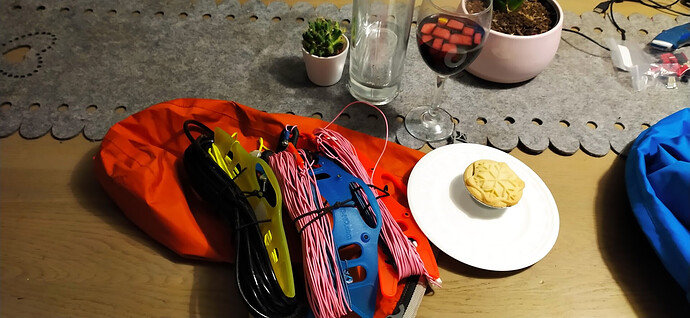Morse Code
I was reading Julian G4ILO’s page on the FT-817 and there was a link to his MorseGen software. I have come across this software before. It is really excellent, does exactly what it is designed to do without any fuss. The features are spot on. I can’t fault it. I shall be making use of it as I continue my learning journey.
MorseGen
I’m also using the K7QO Code Course which works really well with a mobile phone, headphones and notepad. It gives me no excuses not to practice anytime, anywhere.
I tried to learn Morse Code in 2018 - and indeed have just received confirmation via QSL card of my first successful CW contact, whist chasing a SOTA operator.
QSL Cards
I finally got round to having some QSL cards printed professionally about 6 months ago and had to work through writing replies for the cards I have been receiving sporadically for the past 18 months as well as starting to send out cards for some of my more memorable QSOs and SOTA/WOTA/HEMA activations. Sorting them into DX entity piles really brought home how much fun I’ve had with HF over the past 4 years!
QSL cards sorting into DX prefix
A New Dipole
I made use of the break in the weather this afternoon to complete a new Inverted V dipole. When operating from the fells with HF I use the tried and tested SOTABeams Band Hopper IV Linked Dipole. As purchased it has sections for 20m, 30m, 40m & 80m. After 18 months of grueling use I ended up rewiring mine, and chose to swap the 30m section for a 60m section as I found I was missing the odd chase for 60m on SSB. If I pick up CW again I’ll add a 30m section back into the SOTABeams antenna.
The SOTABeams dipole is rated for 100w (although I have pushed 150 watts through it SSB with no obvious side effects) and I wanted one that could handle higher power.
I’d previously made a 20m dipole with long cord extensions from higher power wire I was sent by Mike 2E0YYY. He recently sent me some more wire so that I could make it multiband.
I made the decision to use 15A Anderson PowerPole connectors for the links and with the long-overdue purchase of a crimp tool was able to complete the construction on my favourite lunchtime chasing spot Queen Adelaide’s Hill, just up from Rayrigg Meadow Car Park. I’ve created this one with links at 20m, 30m, 40m, 60m & full size is 80m.
This new dipole should be good for as much as I can sensibly throw at it, certainly 200 watts won’t be an issue.
New Inverted V Dipole
The initial lengths for each segment of the dipole were calculated using the SotaMaps HF Linked Dipole Antenna Designer.
I used the excellent Rig Expert AA-34 to tune each section (which I was very fortunate enough to be given for free!), however without an antenna analyzer I still think you could use the SotaMaps software to wire up a dipole which would be pretty close to perfect, and if you cut the lengths long initially using the recommended dimensions on the tool then you could use a standard rig such as an FT-817 with its’ SWR meter to fine tune the sections.
I will stick with the SOTABeams antenna when operating portable, but when operating static mobile or chasing from a lower hill the new higher-power antenna will complement my more powerful transceiver setup for which I am constructing a Pelicase based transceiver/amplifier combination. The RG58 and thicker wire make a significant difference to the weight of the antenna.
Hope everyone is making productive use of their time when not able to be on the fells!
Mark.




